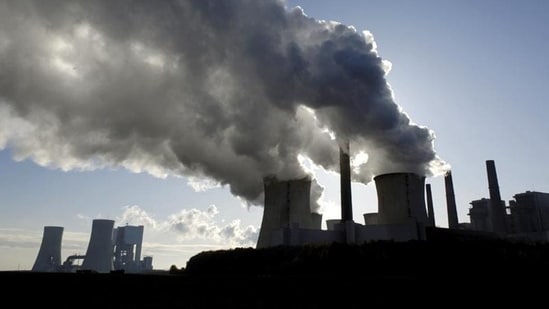On World Environmental Health Day, a report by PwC India and Observer Research Foundation titled “Climate, Community, Cooperation: An Indian Approach to Adaptation in the Global South” sheds light on challenges in climate financing.

ALSO READ- World Environmental Health Day 2023: Date, history, significance
What is climate financing?
Climate financing, as defined by the United Nations Framework Convention on Climate Change (UNFCCC), encompasses local, national, or transnational funding from various sources, including public, private, and alternative, to support climate change mitigation and adaptation efforts. The Cancun Agreements of 2010 set the initial target of mobilizing USD 100 billion annually by 2020 from developed countries for developing nations. The Green Climate Fund (GCF) was established to facilitate this goal.
This target was reinforced in the 2015 Paris Agreement, with plans to increase it after 2025, emphasizing contributions from diverse funding sources, both public and private. Climate finance is crucial for adaptation initiatives, just as it has been for mitigation, as addressing emissions reduction and adapting to the “new normal” requires substantial investments.
Sources of climate financing
Currently, climate finance primarily comes from three sources: bilateral, multilateral, public, and private. Multilateral organizations, such as the GCF, Adaptation Fund, and the World Bank’s Climate Investment Funds (CIF), manage a significant portion of these funds. Developed countries can provide financial support either directly or through accredited institutions.
According to data from OXFAM and the OECD, middle-income countries received almost 70% of total climate finance from 2016 to 2018, while the least developed countries (LDCs) received only 14%, and small island developing states (SIDS) obtained merely 2%. Notably, approximately 66% of the finance targeted mitigation, leaving only about 25% for adaptation.
Climate finance extends to various sectors, including energy, infrastructure, and agriculture. Some large-scale projects, while not entirely green or climate-compliant, may have climate-sensitive elements that impact funding requirements. Therefore, it is essential for national governments and stakeholders to assess their climate finance needs and mobilization strategies, the report says.
Challenges to climate financing
The definition and features of climate finance, particularly the notion of additivity, have been subjects of debate. Estimation methodologies vary, leading to inconsistencies in calculating India’s climate finance requirements. Additionally, private sector involvement remains inadequate to bridge the multi-billion-dollar funding gap in India.
The lack of consensus on equity and common but differentiated responsibility further complicates climate finance discussions. While India estimated ₹2,30,000 crore in climate finance requirements in its Economic Survey of 2012-13, precise mobilisation, provision, and utilization of these funds remains unclear.
Furthermore, there is a disconnect between measured flows of climate finance from developed countries, disbursed cross-border funds, and their actual utilization. Independent reviews of India’s National Action Plan on Climate Change (NAPCC) have highlighted ambiguities in financial estimates and a lack of objective criteria for prioritizing actions, the report notes.
What is the solution? The report says…
According to the report, to address these challenges, there is a need to involve the private sector more actively in catalysing climate finance. While multilateral climate financing plays a significant role, blending public and private sector finance is essential for climate investments. The State of Climate Finance in India Report 2022 indicates a USD 1.01 trillion pledge for climate finance by 2030, driven by increased focus on priority sectors like infrastructure.
India remains a prominent recipient of climate change assistance in the Global South, surpassing all other nations. However, aligning clear policy signals with India’s Nationally Determined Contributions (NDCs) and ensuring judicious allocation of funds between mitigation and adaptation are crucial for the country’s sustainable climate resilience, the report adds.
In India, domestic sources continue to be the primary contributors to climate finance, accounting for 87% and 83% in fiscal years 2019 and 2020, respectively. The private sector played a significant role, contributing approximately 59% of these domestic sources, amounting to USD 22 billion. Public sector flows were evenly distributed between government budgetary allocations (central and state) and public sector undertakings (PSUs). Most of the finance was directed towards mitigation initiatives, particularly clean energy, clean transport, and energy efficiency, the report says.
Jaivir Singh, Vice Chairman, PwC India Foundation says: “The need for action is now, especially around investments in adaptation-related action which addresses the basic needs and creates capacity for rural and indigenous communities. The private sector, along with others, needs to create models that can scale and have the flexibility in approach so that we are curating to the context of localised needs.”
 Subscribe today by clicking the link and stay updated with the latest financial insights! Click here!
Subscribe today by clicking the link and stay updated with the latest financial insights! Click here!

